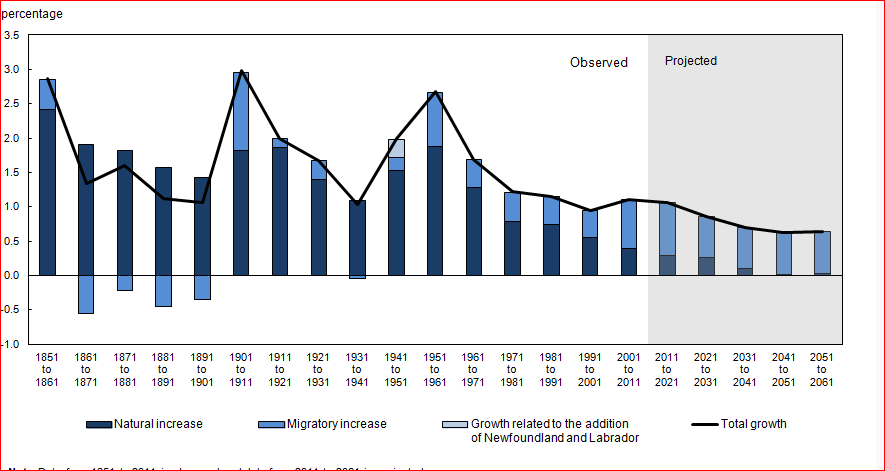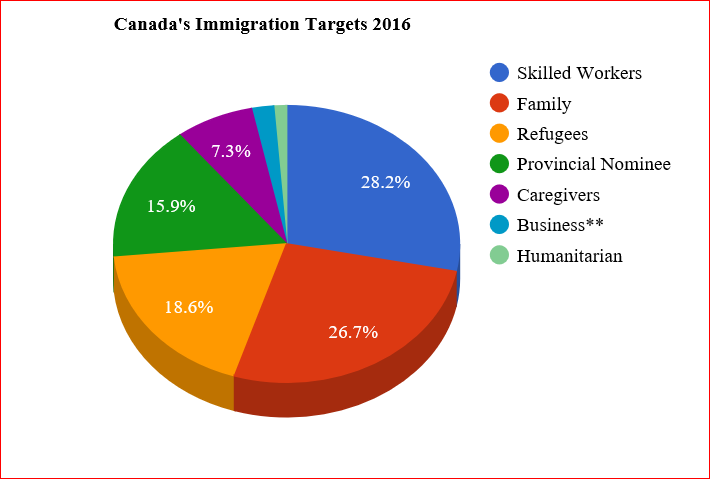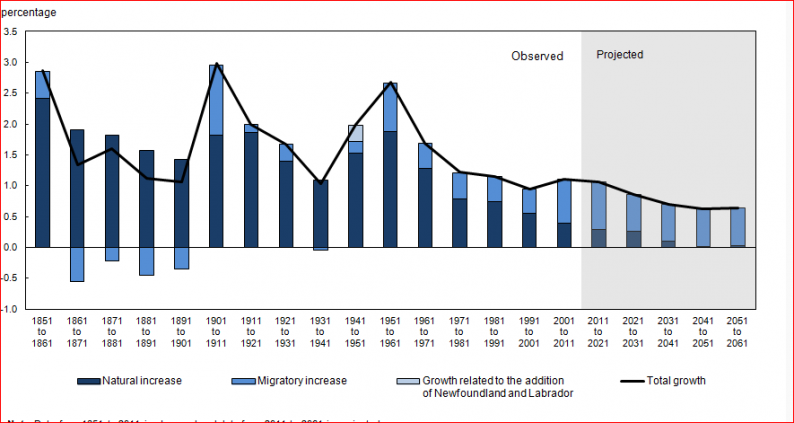“They (immigrants) disproportionately create new companies … The point is, they create jobs.” Governor Stephen Poloz of the Bank of Canada, Feb 1, 2017
Canadians are watching in disbelief and in utter dismay at the dysfunctional U.S. immigration policy. The closing of the immigration doors based upon religion is an anathema to Canadians. In addition to humanitarian grounds, pro- immigration policies make good economic sense. Canada is literally banking on increased immigration to sustain economic growth. According to Stephen Poloz, immigration is expected to account for roughly one-third of Canada’s 1.5 per cent potential GDP growth. Immigration growth is
“A really important ingredient in any economy’s growth story, especially ours, where the demographics are slowing down.”
Not unlike the United States or Western Europe, the native-born Canadian population is aging and exiting the labour force in significant numbers (Chart 1). Overall, the population growth rate has steadily declined in the last quarter of the 20th century, especially with respect to the native-born population. Statistics Canada projects that immigration will continue to be a key driver of population growth—without it the Canadian population growth would be close to zero in less than 20 years. Canada’s demographic point of inflexion has arrived and that means that future growth will rely on future immigration.
Chart 1 Canada’s Population Growth Projections

By the end of 2016, Canada will have admitted nearly 250,000 immigrants, and the quota for 2017 has been increased to 300,000. The Finance Minister has advocated increasing the level to 450,000 annually over the next 5 years on purely economic grounds— the need to fill requirements for skilled workers (Chart 2). Skilled labour and entrepreneurial workers make up the largest category.
Chart 2 Distributions of Immigrants by Category

Source: Govt of Canada











Leave A Comment